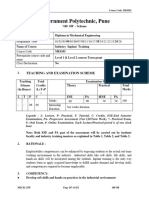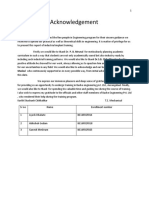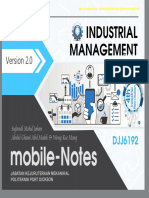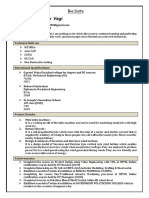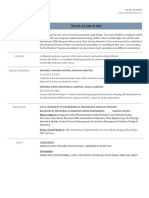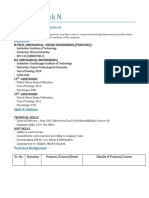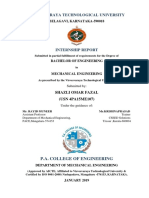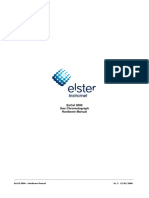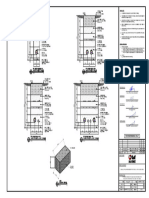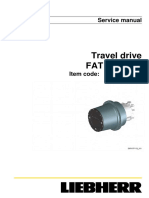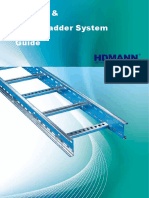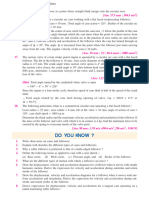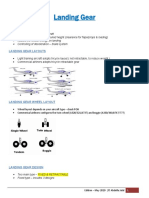26-07-2025
Also, one needs to submit the
SAMPLE FORMAT hard copy of the PPT on A4-
sized paper on the day of
OUTLINING presentation.
POINTS FOR A
SEMINAR
The Presentation is limited to 10
PRESENTATION ON minutes.
INDUSTRIAL
TRAINING.
The A4-sized paper should
contain four slides of the
presentation on both sides.
1
� 26-07-2025
[title should cover what ever is learned] Ex: Bridging
Academic Knowledge with Practical Applications in
Mechanical Engineering
[Note: this page should have a photo or .gif related to
INDUSTRIAL TRAINING AT what company primarily does ]
[COMPANY, PLACE]
TRAINING PERIOD: []
By,
Name:
Reg. no:
Department:
VSSUT, Burla.
2
2
� 26-07-2025
EX: BRIDGING ACADEMIC KNOWLEDGE WITH
PRACTICAL APPLICATIONS IN MECHANICAL
ENGINEERING
Name : Training Period : []
Roll no : Company : [Company, Place]
Department of Mechanical Engineering Industry Sector: [Energy, manufacturing , etc.]
VSSUT, Burla
Institute Coordinator: Company Supervisor:
Mr. So. SO Mr. so. SO
Dean, T&P Sr. Executive Engg.
VSSUT, Burla. Generation Division.
NTPC, TALCHER
3
� 26-07-2025
OUTLINE FOR THE PRESENTATION
• Introduction to the Company
“In this blank space insert
• Objectives of Industrial Training one good photo of yourself
in the plant if possible with
• Overview of Departments/Work Areas
internship company logo in
• Key Projects & Tasks Assigned background.”
• Technical Skills Acquired
• Challenges Faced & Solutions
• Alignment with Academic Curriculum
• Conclusion & Future Takeaways
4
� 26-07-2025
COMPANY PROFILE
• Core Business: [E.g., "Leading manufacturer of CNC components for aerospace"]
• “Should take from some reference.”
• Facilities: [Workshops, Labs, Testing Units]
• “Should take from some reference.”
• Scale: [Employee count, annual output, market reach]
• “Should take from some reference.”
• Why this company? [Relevance to your mechanical engineering interests]
5
� 26-07-2025
TRAINING OBJECTIVES
• Academic Requirement: Fulfil curriculum credits
• Personal Goals:
• Understand real-world engineering workflows
• Apply theory (e.g., Thermodynamics, CAD, FEA, HVAC) in practice
• Develop industry-specific skills (e.g., PLC programming, GD&T, maintenance protocols)
6
� 26-07-2025
DEPARTMENTAL OVERVIEW
Highlight 2–3 key departments you worked in:
• Design & R&D:
• Tools used: [SolidWorks, ANSYS, CATIA]
• Projects: [E.g., Redesigning a gear assembly for reduced vibration]
“Suitable data in support, if possible.”
• Production/Manufacturing:
• Processes observed: [Casting, Welding (TIG/MIG), CNC Machining]
• Quality checks: [CMM, SPC]
“Suitable data in support, if possible.”
• Maintenance & Operations:
• Activities: [Preventive maintenance schedules, troubleshooting hydraulic systems]
“Suitable data in support, if possible.”
7
� 26-07-2025
KEY PROJECTS/TASKS
Detail of 1–2 major contributions (also use visuals: diagrams, photos if allowed):
• Project 1: [E.g., "Optimizing HVAC efficiency in assembly plant"]
• Your Role: Data collection, CFD simulation support, drafting reports
“Present all data and workings in support, if possible.”
• Outcome: 8% energy reduction proposed
• Project 2: [E.g., "Failure analysis of conveyor belt motor"]
• Your Role: Root cause analysis (vibration testing), suggesting bearing replacement protocol
“Present all data and workings in support, if possible.”
• Outcome: 10% reduction proposed for system down time.
8
� 26-07-2025
TECHNICAL SKILLS DEVELOPED
• Software: [MATLAB for data analysis, AutoCAD for layout planning]
“Submit the document in a suitable format in support, if possible.”
• Hardware: [Operating lathe/mill, calibrating sensors, PLC troubleshooting]
“Submit the document in a suitable format in support, if possible.”
• Soft Skills: Cross-department collaboration, technical reporting, time management
“Submit the document in a suitable format in support, if possible.”
9
� 26-07-2025
CHALLENGES & SOLUTIONS
• Challenge 1: Understanding proprietary software [e.g., company-specific MES tools]
• Solution: Shadowed senior engineers + self-study manuals
• Challenge 2: Adapting academic knowledge to real-world constraints (cost/time)
• Solution: Simplified designs using DFM (Design for Manufacturing) principles
10
10
� 26-07-2025
THEORY VS. PRACTICE
• Contrast classroom learning with industry realities: Academic
Industrial Application
Concept
“Submit the document in a suitable format, where possible.”
Optimizing coolant flow in
Fluid Mechanics
machining centers
Boiler efficiency audits in
Thermodynamics
power plant
Redesigning shaft couplings to
Machine Design
reduce downtime
11
11
� 26-07-2025
SAFETY PRACTICES OBSERVED
• Company Safety Culture: LOTO (Lockout-Tagout), PPE mandates, daily toolbox talks
• Incident Example: [Briefly describe a safety drill]
• Submit the document in suitable format in support where possible.
12
12
� 26-07-2025
LEARNING OUTCOMES
• Technical Insights: [E.g., "Importance of tolerances in mass production"]
“Give insight into why one thinks in that particular manner.”
• Career Clarity: [Confirm interest in R&D/manufacturing?]
“Give insight into why one thinks in that particular manner.”
• Gaps Identified: [E.g., Need better knowledge of automation systems]
“Give insight into why one thinks in that particular manner.”
13
13
� 26-07-2025
CONCLUSION
• Training provided exposure to [industry standards, e.g., ISO 9001, ASME]
• Reinforced the value of [specific mechanical engineering principles]
• Grateful for mentorship at [Company] and support from [Institute]
14
14
� 26-07-2025
FUTURE RECOMMENDATIONS
• For Students: Seek training in emerging areas (e.g., additive manufacturing, robotics)
• For Institute: Include industry software certifications in the curriculum
15
15
� 26-07-2025
Q AND A
• Open floor
16
16










